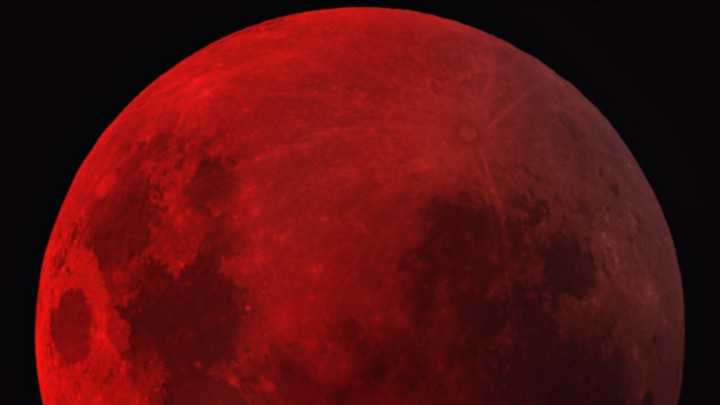A “triply special” lunar eclipse will grace the skies across Brazil today, starting at 11:27 pm, advancing into the early hours of the morning. The phenomenon will reach its apex, at 1:11 am, when the natural satellite will present the reddish hue that gave it the name “Blood Moon”. The event will last just over 3 hours, ending at 2:55 am, Brasília time.
“The great advantage of this eclipse, which I call triple total, is that, in addition to being a total eclipse of the moon, it will be fully visible throughout Brazil, from North to South; from East to West. The whole of Brazil will see this eclipse from start to finish, in all its phases, in the penumbral, partial, and total sequence, and then returning to partial and penumbral,” said astronomer Josina Nascimento, from the National Observatory.
“Another advantage is that the Moon will be very high in the sky, far from the horizon, very easy to see. Now it’s just a case of hoping the weather turns out to be good and doesn’t get in the way of this show,” she added.
According to Josina, the next eclipse of this type and thus “triple total” – a total eclipse with all its stages that can be fully appreciated in all regions across the country – will only take place in June 2029, between the 25th and 26th.” But until then, we will have several partial eclipses”, reassures the researcher.
In addition to Brazil, the other countries of South America and all of Central America will also have the privilege of witnessing this Blood Moon. It will also be visible in parts of North America, Europe and Africa.
Lunar eclipses occur when there is an alignment between the Sun, Earth and Moon. “When an extended body, such as the Sun, illuminates another extended body – in this case, the Earth –, two regions of shadow occur: the penumbra and the umbra. When totally dark, without any luminosity, this shadow is the umbra; when it receives light in some points, that shadow, a little lighter, is the penumbra.
“When the Moon enters this penumbral shadow, the penumbral eclipse begins; when it is fully in the penumbra, it is the penumbral eclipse. When it starts to enter the umbra, it is the partial eclipse. When she is fully immersed in the umbra, it is a total eclipse, and she takes on a beautiful reddish color. That’s why it’s called the Blood Moon”, details the astronomer from the National Observatory.


